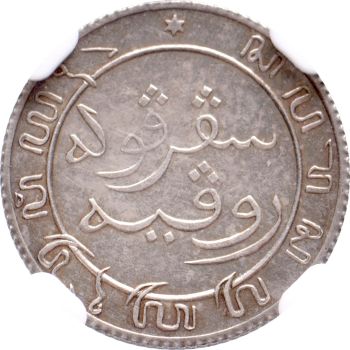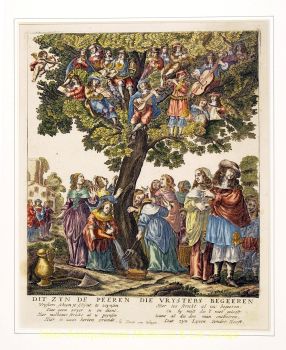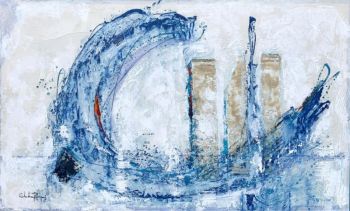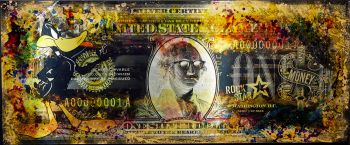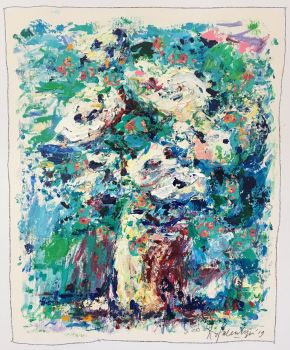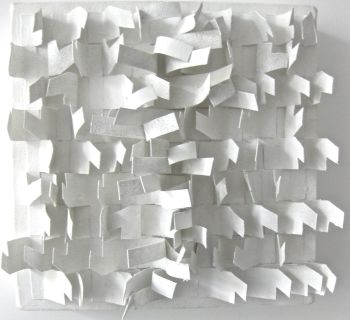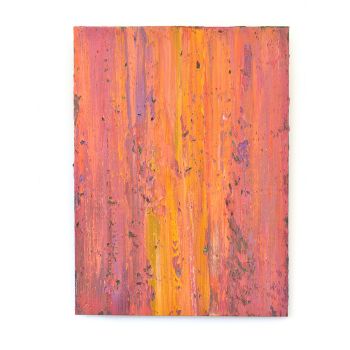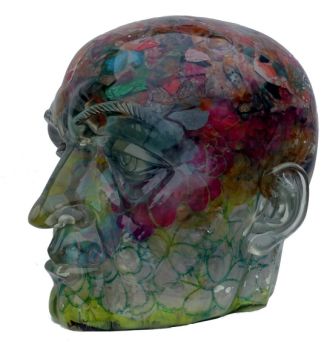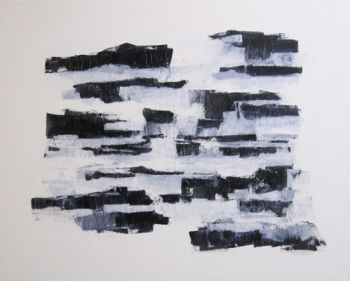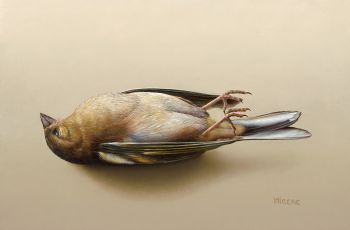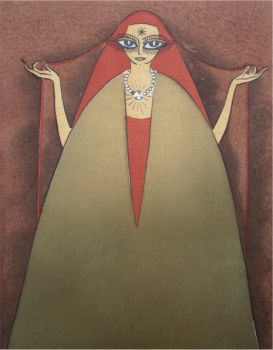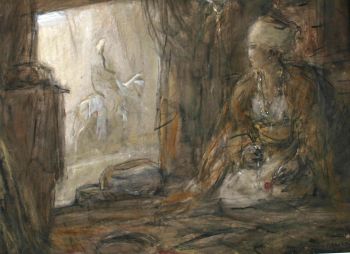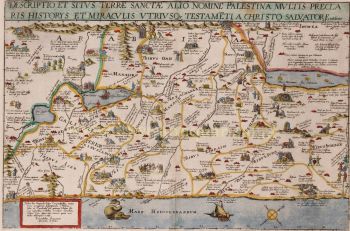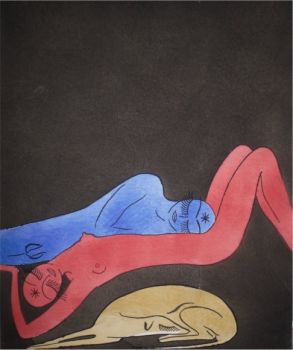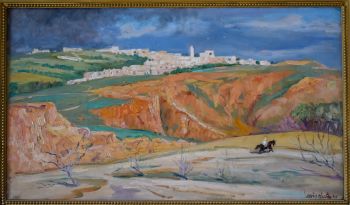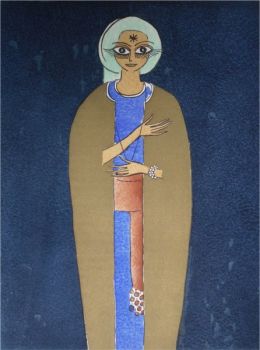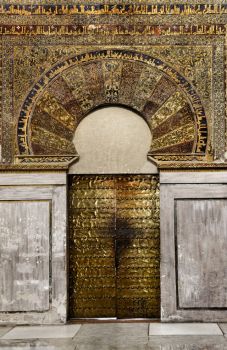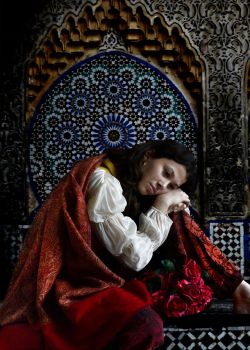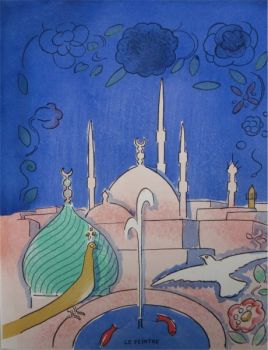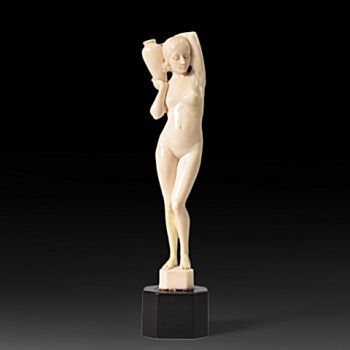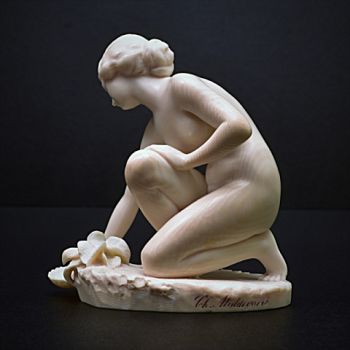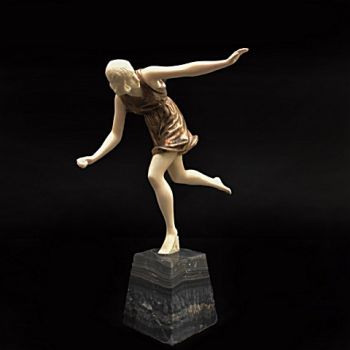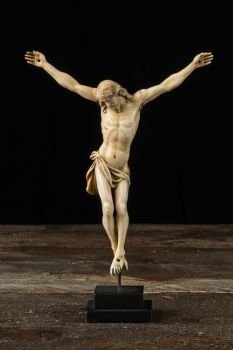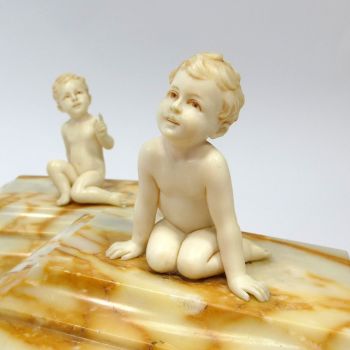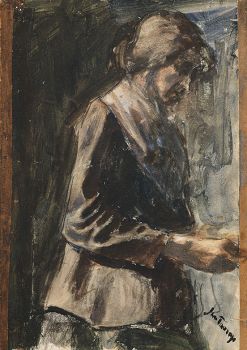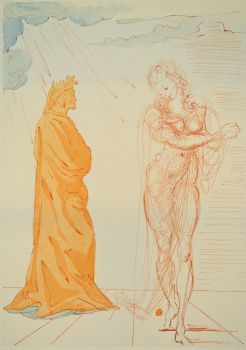IMPORTANTE E RARO GRANDE DIPINTO INDIANO "COMPANY STYLE" SU AVORIO RAFFIGURANTE UNA SFILATA 1850 - 1900
Artista Sconosciuto
ossoAvorioAcquerello
Prezzo su richiesta
Zebregs & Röell - Fine Art - Antiques
- A proposito di opere d'arteIMPORTANT AND RARE LARGE INDIAN 'COMPANY STYLE' PAINTING ON IVORY DEPICTING A PARADE
North India, late 19th century
Opaque watercolour and gold on ivory, in finely carved ivory frame.
H. 27.6 x W. 37.3 cm (excl. frame)
H. 38.8 x W. 45.4 cm (incl. frame)
Note:
The painting depicts a ruler, perhaps the ruler of Jodhpur, carried on a palaquin amidst an extensive procession of noblemen, musicians and attendants, coming out of a town on a hill top, a cannon on the town wall firing. The frame, also in ivory, is carved in shallow relief with entwined floral motifs. In the 19th century after the British East India Company occupied Delhi in 1803 and the breaking up of Mughal suzerainty, the Company played the dominant political and administrative role in India. Artists once active in the Mughal workshops were out to seek other lucrative employment and the style of Indian painting came more and more under English/European patronage. This style is known as “Company style painting”. Native Indian talents, now employed by the new rulers, adapted themselves to the new style by studying and copying available European models. Company style paintings were more naturalistic and picturesque and ivory (as well as glass and mica) was a popular new medium with European collectors. Following the English tradition of miniature portrait paintings on ivory, Indian painters perfected the technique of painting on ivory. Most paintings on ivory were small portraits or fanciful architecture. Large paintings on ivory the seize of the present one are very rare. - A proposito di opere artista
Può succedere che un artista o un creatore sia sconosciuto.
Alcune opere non sono determinate da chi sono state realizzate o sono state realizzate da (un gruppo di) artigiani. Esempi sono statue dell'antichità, mobili, specchi o firme non chiare o leggibili ma anche alcune opere non sono affatto firmate.
Inoltre puoi trovare la seguente descrizione:
•"Attribuito a …." A loro avviso probabilmente opera dell'artista, almeno in parte
•“Studio di ….” o “Officina di” A loro avviso un'opera eseguita nello studio o nella bottega dell'artista, eventualmente sotto la sua supervisione
•“Cerchio di…” A loro avviso un'opera del periodo dell'artista che mostra la sua influenza, strettamente legata all'artista ma non necessariamente al suo allievo
•"Stile di..." o "Seguace di..." A loro avviso un'opera eseguita nello stile dell'artista ma non necessariamente da un allievo; può essere contemporaneo o quasi contemporaneo
•“Modalità di…” A loro avviso un'opera nello stile dell'artista ma di epoca successiva
•"Dopo …." A loro avviso una copia (di qualsiasi data) di un'opera dell'artista
•“Firmato…”, “Datato…” o “Iscritto” A loro avviso l'opera è stata firmata/datata/inscritta dall'artista. L'aggiunta di un punto interrogativo indica un elemento di dubbio
•"Con firma....", "Con data...", "Con iscrizione..." o “Riporta firma/data/iscrizione” a loro avviso la firma/data/iscrizione è stata aggiunta da qualcuno diverso dall'artista
Sei interessato ad acquistare questa opera d'arte?
Artwork details
Related artworks
- 1 - 4 / 12
- 1 - 4 / 4
Rene Rietmeyer
"Portrait of Alessandra" 20182018
Prezzo su richiestaEuropean Cultural Centre Collection
1 - 4 / 24Elisabeth Treskow
Lapislazzuli afgano intarsiato con oro su un supporto d'argento1950 - 1960
Prezzo su richiestaJacob J. Roosjen SRI
1 - 4 / 24Artista Sconosciuto
UN NETSUKE IN AVORIO DI UN OLANDESE CHE TIENE UN GALLETTO18th century
Prezzo su richiestaZebregs & Röell - Fine Art - Antiques
Artista Sconosciuto
Olandesi in miniatura (Netsuke)1700 - 1900
Prezzo su richiestaZebregs & Röell - Fine Art - Antiques
Artista Sconosciuto
UN NETSUKE IN AVORIO DI UN OLANDESE CHE GIOCA CON UN RAGAZZINO18th century
Prezzo su richiestaZebregs & Röell - Fine Art - Antiques
Artista Sconosciuto
UN RARO SADELI INDIANO COMPLETO DI LAVORO E SCRITTURA INTARSIATI1800 - 1850
Prezzo su richiestaZebregs & Röell - Fine Art - Antiques
Artista Sconosciuto
UN PICCOLO NETSUKE IN AVORIO DI UN OLANDESE CON UN TAMBURO1750 - 1800
Prezzo su richiestaZebregs & Röell - Fine Art - Antiques
Artista Sconosciuto
UN NETSUKE MARINO IN AVORIO DI UN OLANDESE CHE TIENE UN FAN . CINESE18th century
Prezzo su richiestaZebregs & Röell - Fine Art - Antiques
1 - 4 / 24Paulus Franciscus Kromjong
Fiori davanti ad Arearea Aka (gioia) di Gauguin'20th century
Prezzo su richiestaZebregs & Röell - Fine Art - Antiques
Artista Sconosciuto
A large wall map of Asia by Nicolas de Fer 1647 - 1720
Prezzo su richiestaZebregs & Röell - Fine Art - Antiques
1 - 4 / 12






